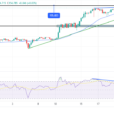When I was a graduate student in the late 1960s, I had an opportunity to hear a lecture by the legendary Milton Friedman who explained the difference between easy and tight monetary policy. He argued that low-interest rates are a sign of a tight monetary policy, rather than the conventional thinking that low rates mean the central banks are easing up.At that time, the U.S. economy was growing around 5% in real terms, inflation was hovering around 2% and, most importantly, bank credit was expanding sufficiently to support economic expansion. At the time, however, I did not grasp the full import of Friedman’s argument.
Fast forward to the market of the last decade where interest rates were near zero, inflation almost non-existent and growth barely 2%. These are classic conditions of a tight monetary environment. Central banks introduced QE programs to pump liquidity into the economy because bank credit was not expanding. The slow economic growth meant that incomes would stagnate, again another indicator of tight conditions. The low-interest rates since the financial crisis are a symptom of the economic weakness of advanced economies. Central banks are finding themselves pushing on a string when it comes to promoting growth with low rates and non-conventional monetary measures. These measures were taken because monetary conditions were too tight i.e. zero-bound interest rates did not jump-start the economies.
Japan was first to experiment with the central bank purchasing government bonds and equities. The Fed and the ECB followed each with their own version of QE. To date, the efforts have proven to be inadequate and conditions remain very tight In Japan. Eurozone short-term interest rates remain slightly negative and the 10yr bond is held at a zero interest rate in Japan and slightly positive in the Eurozone.
Moreover, financial markets expect tight monetary policy for years to come. The bond markets predict that many central banks will fail to meet their 2% inflation target (see the accompanying table).












Leave A Comment